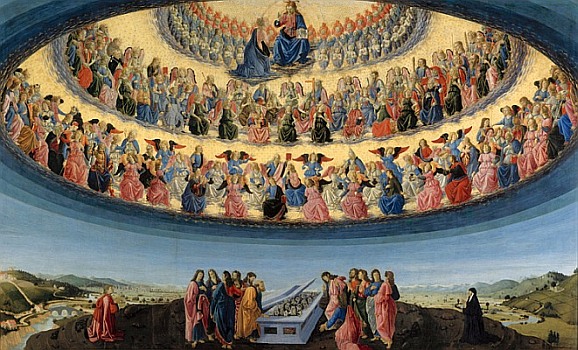
Marymass is the Scottish name for the feast of the Assumption on 15th August. A Celtic festival by the name of Marymass was been celebrated in mid-August as early as the 7th century, with some festivals having actual records that go back to about the year 900.
Very early on, the Church chose August 15th to honor the Assumption of the Blessed Virgin Mary. August 15 would be the full moon of August if the new moon fell on the first of the month as it did during the time of the lunar calendar. It was proclaimed a holiday throughout the Roman Empire by Emperor Maurice around 600 in the East, and about 50 years later in the West. Common Celtic people would not have been aware of the theological doctrine of the assumption—that Mary did not die but was taken bodily up into heaven at the end of her earthly life. However, Celts would have associated Mary with the fruitfulness of the earth at the time of harvest, and celebrations connected to other harvest goddesses were transferred to Mary as the pagan Celtic lands were converted to Christianity. Representations of Mary often resembled the ancient depictions of harvest goddesses wearing robes decorated with ears of corn.
Marymass was the primary harvest festival in the northern Celtic regions where the harvest was later. It replaced the southern harvest festival Lughnasa which was normally celebrated anytime from late July to early August. The offering of the first fruits, first grains, or first loaf of bread, or Lammas (loaf-mass) which usually occurred during Lughnasa in the south, was transferred to Marymass in the north. The Lammas bannock (a traditional Scottish loaf) would be made from the new corn, dedicated to Mary the Mother of God, and used in Eucharistic celebrations. Some other traditional Marymass activities, such as elaborate flower displays, well dressing, torchlight and candlelight processions, and the offering of the first bread, were preserved intact for centuries because of the isolation of the Scottish islands and highlands.
Marymass fairs and festivals are still extremely popular in Scotland today, and frequently involve traditional music, poetry, and dancing. In some areas of Scotland modern Marymass tributes to the Blessed Virgin Mary have been combined or replaced by an emphasis on the historical figure Mary Queen of Scots. Young girls compete to be crowned Queen of Marymass with a court of four attendants each of whom is also called Mary.
By 900, the aroma of herbs and flowers was widely associated with Mary's victory over death. People brought medicinal herbs and plants to church (periwinkle, verbena, thyme) to be incensed and blessed, bound into a sheaf and kept all year to ward off illness, disaster and death. Marymass also marks the start of Our Lady's 30 Days, a time when animals and plants lose their harmful qualities and all food is wholesome. This period of benevolence coincides with the seven weeks following the full moon of the Jewish month of Av, which were also called the Weeks of Comfort. The readings for these weeks are comforting, promising peace and prosperity.
In the Celtic calendar Mary is associated with both Lughnasa and Beltane: Beltane because of spring’s rebirth, and Lughnasa/Marymass because of the comparison between the fruitfulness of the harvest and the new creation of childbirth, especially the emerging of the corn from within the ear. Because of her rising into heaven, Mary is sometimes called the patron of airline pilots and crews. Marymass is celebrated on August 15.







No comments:
Post a Comment